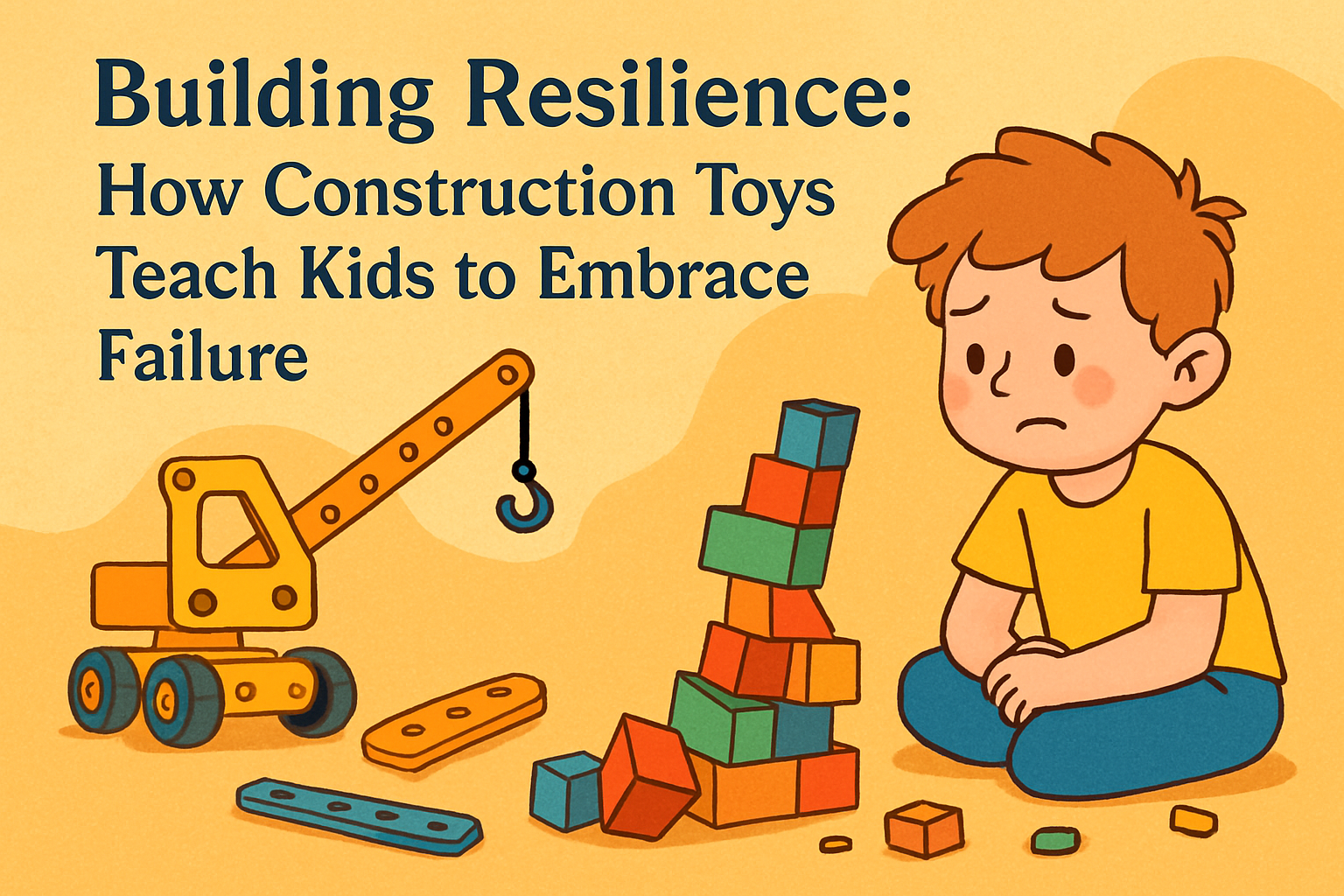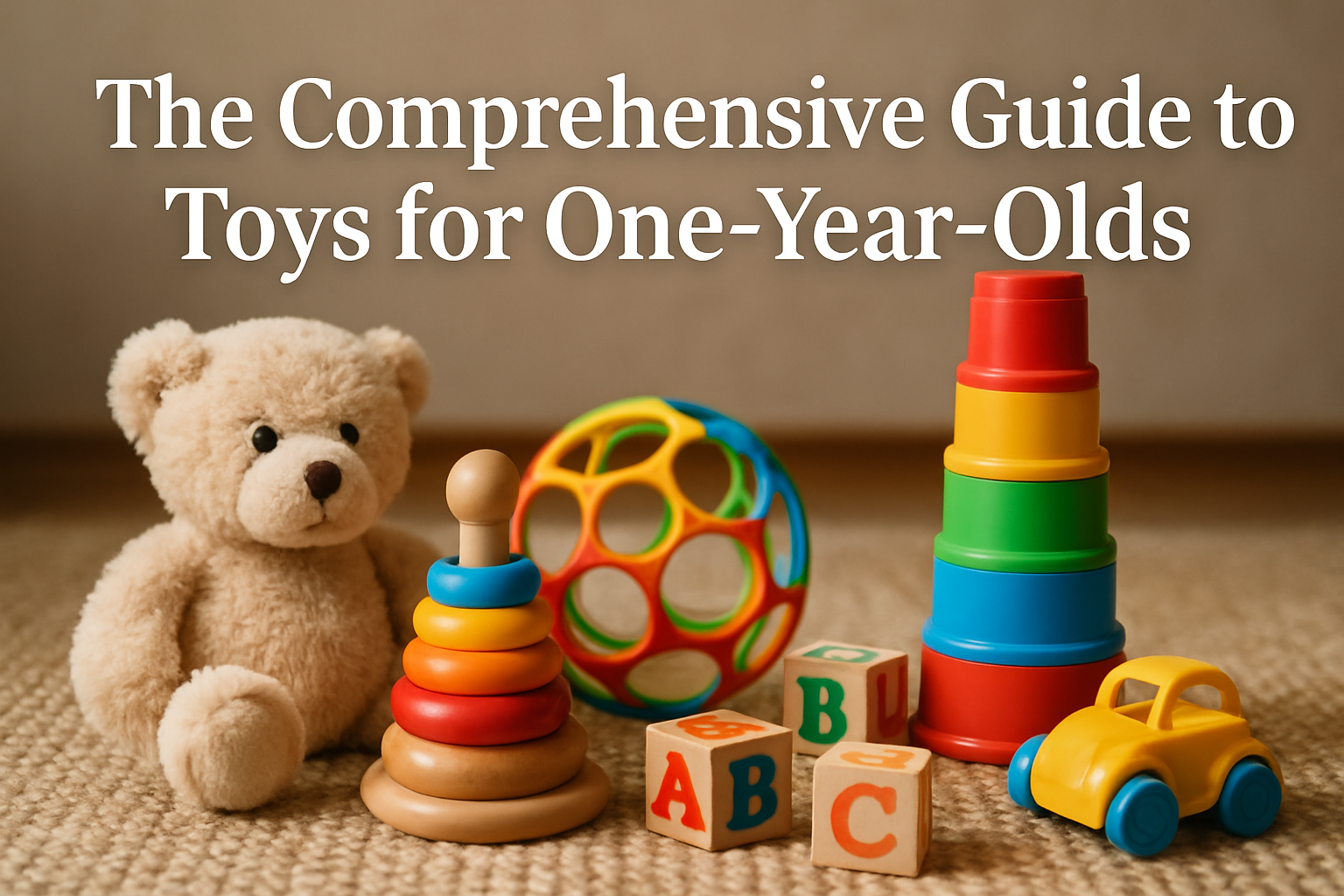The Comprehensive Guide to Toys for One-Year-Olds
Understanding Resilience Through PlayThe Importance of ResilienceResilience h...
Add description, images, menus and links to your mega menu
A column with no settings can be used as a spacer
Link to your collections, sales and even external links
Add up to five columns
Add description, images, menus and links to your mega menu
A column with no settings can be used as a spacer
Link to your collections, sales and even external links
Add up to five columns

Resilience helps children bounce back from failures and challenges. It is vital in their development, allowing them to learn how to cope with difficulties and manage stress. Through play, particularly with construction toys, children engage in an interactive process that fosters resilience.
Construction toys provide a practical platform for trial and error during play. When a child builds a structure, only to have it collapse, they encounter a failure. This experience teaches them to assess the situation and try again, instilling a sense of persistence. They learn that setbacks are a normal part of the learning process.
Moreover, experiences with construction toys instill an attitude of solving problems. As children manipulate blocks or bricks, they are not just playing; they are developing critical thinking and problem-solving skills. These toys require children to innovate, strategize, and adapt, fostering a mindset that values effort and creativity. Through this process, children learn to view challenges as opportunities to improve, reinforcing their emotional strength and ability to cope with life’s ups and downs.
Construction toys, such as LEGO, play a vital role in empowering children to explore their creativity. These toys provide a platform for children to experiment with different designs and ideas. As children engage in assembling and disassembling structures, they build a sense of self-worth. This ability to create something tangible enhances their confidence and encourages them to push their creative boundaries. Moreover, failure is redefined as part of the learning journey, allowing children to see setbacks as valuable experiences rather than discouragements.
Playing with construction toys presents children with opportunities to face setbacks. These moments are crucial for growth, as they teach persistence in the face of challenges. When children engage in problem-solving during play, they enhance their critical thinking skills. Overcoming obstacles not only bolsters their resilience but also fosters self-awareness. By embracing these challenges, children learn to view themselves as capable and resourceful, laying the groundwork for future confidence in their abilities.
Creative freedom in play is vital for children's development. Construction toys often lack strict instructions, providing children the opportunity to engage in imaginative play. This type of open-ended engagement allows kids to explore their ideas without limitations.
When children interact with these toys, they assess risks and experiment with spatial relationships. For instance, stacking blocks or building structures involves trial and error. Through this process, they learn what works and what doesn’t, sharpening their cognitive skills.
Moreover, critical thinking flourishes during play. As children navigate their creations, they must make decisions and solve problems. This aspect not only enhances their creativity but also equips them with essential life skills. Through risk-taking in a playful context, kids build confidence in their abilities and learn to embrace challenges.
Toys serve as more than playthings; they actively contribute to developing essential life skills in children. When engaged purposefully, play can foster resilience, emotional awareness, and social aptitude.
Fostering Resilience
Toys that promote engagement challenge children to think critically and overcome obstacles. When children encounter setbacks during play, they learn the importance of bouncing back from failures. This experience nurtures a sense of resilience that extends beyond playtime into their daily lives.
Building and Balancing Toys
Toys that require building and balancing help enhance both physical and emotional resilience. These activities encourage children to experiment, take risks, and learn from the outcome. As they master these skills, they develop confidence in their abilities to tackle complex challenges.
Navigating Challenges
Engaging with toys that present challenges teaches children patience and perseverance. As they face obstacles, children learn that success often requires time and effort. Through this process, they cultivate a mindset geared toward problem-solving, essential for personal growth and adaptability.
Through these avenues, purposeful play becomes a powerful catalyst for growth, equipping children with the necessary skills to thrive in various aspects of life.
Collaboration and interpersonal skills are essential components of social and emotional learning, and construction toys play a pivotal role in nurturing these skills in children.
Construction toys facilitate collaborative play experiences, allowing children to engage in teamwork. As they build together, they not only share ideas but also strategize to achieve common goals. This communal effort develops essential team-building skills as children learn to negotiate roles and responsibilities. For example, one child might take the lead in designing a structure while another focuses on gathering materials, demonstrating a division of labor that fosters cooperation.
Moreover, engaging in shared play through construction toys encourages children to learn empathy and emotional intelligence. These experiences help them understand and appreciate different perspectives, which is crucial for social interaction. When children collaborate, they must navigate feelings such as frustration or joy, thus allowing for deeper emotional connections with their peers.
In summary, the interaction fostered through construction toys significantly enhances collaboration and interpersonal skills, facilitating an environment where children can learn and grow emotionally and socially.
Construction toys offer more than just entertainment; they serve as valuable tools in building resilience in children. These toys invite open-ended play, where young minds can explore, create, and learn significant life skills.
Engaging with construction toys enhances problem-solving capabilities in children. As they build and dismantle their creations, they encounter challenges that require critical thinking and innovative solutions. This process fosters patience, perseverance, and adaptability. Children learn to navigate setbacks and frustrations, which are inevitable in the construction process.
Creative play encourages flexible thinking. When children construct and design, they are not afraid to take risks. They explore different shapes, sizes, and structures, leading to unique outcomes. Significant to this is the understanding that mistakes are a part of learning. Each misstep becomes an opportunity for growth, guiding them towards improvement and creative problem-solving.
Adult involvement plays a significant role in enhancing children's emotional development through play. When adults engage with children during their construction play, they provide guidance and support. This encouragement helps children value resilience. They learn that persistence pays off and that adult support can be a critical asset in their learning journey.
Building with construction toys goes beyond mere play; it brings significant benefits to child development.
Construction toys offer multifaceted advantages:
Physical Development: These toys enhance fine motor skills and improve hand-eye coordination, vital for everyday tasks.
Cognitive Growth: They support problem-solving skills and spatial reasoning, enabling children to think critically and creatively about how to build and design.
Social Skills Development: Playing with construction toys promotes cooperation and negotiation among peers, aiding in the development of important social interactions.
The educational aspects of construction toys play a pivotal role in child development:
Reduction of Stress and Anxiety: Engaging in construction play provides children with creative outlets, allowing them to express themselves and manage stress.
Boosting Self-Esteem: Completing building projects fosters a sense of achievement and boosts self-esteem, as children see tangible results from their efforts.
Encouragement of STEM Interests: Hands-on learning through construction toys ignites interest in STEM (Science, Technology, Engineering, and Mathematics) fields, laying the groundwork for future exploration in these areas.
The long-term impacts of engaging with construction toys can greatly influence a child's resilience:
Enhancing Problem-Solving Capabilities: Regular play helps children develop better problem-solving skills and establish social connections, which are essential in collaborative environments.
Safe Environments for Handling Failure: Construction play creates safe settings where children can experience failure and learn to navigate challenges. These experiences build self-confidence over time.
Foundation for Emotional Well-Being: Establishing resilience in childhood sets the stage for a solid emotional foundation, equipping children with effective coping strategies for future stressors.
Through play with construction toys, children not only gain practical skills but also develop essential traits that contribute to their overall resilience.
When integrating play-based learning, effective strategies can create engaging environments for children. Here are some practical approaches that educators and caregivers can use to implement this learning style.
Using sensory materials is essential in imaginative play. These objects provide children with a hands-on experience, allowing them to explore their surroundings and express their creativity. For example, materials like clay, water beads, or textured fabrics can enhance imaginative scenarios.
Not only do these materials foster creativity, but they also contribute significantly to problem-solving skills. As children manipulate and experiment with different sensory items, they learn to navigate challenges and develop resilience. This exploration helps them understand cause and effect, leading to a deeper comprehension of the world around them.
Incorporating puppets or stuffed animals can be an effective way to help children rehearse overwhelming situations. By taking on different roles, children can act out their feelings and responses in a safe space. This role-playing can build confidence as they practice handling various social scenarios, from sharing to conflict resolution.
Moreover, using puppets allows children to explore emotions and perspectives different from their own. This exploration can lead to enhanced empathy, as they begin to understand how others might feel in certain situations.
Games play a vital role in teaching resilience through play. Cooperative board games, for instance, encourage children to work together towards a common goal. Such collaborations foster social skills and patience while teaching important life lessons about teamwork.
Experiencing loss in a game also provides a valuable opportunity for emotional growth. Children learn to bounce back from disappointment, equipping them with the ability to cope with setbacks in real life. This understanding instills a sense of perseverance that will benefit them well beyond their early years.
Engaging in these strategies can create enriching experiences that not only enhance learning but also promote emotional and social development in play-based settings.

Understanding Resilience Through PlayThe Importance of ResilienceResilience h...

Understanding Resilience Through PlayThe Importance of ResilienceResilience h...
Sign up for updates, sneak peeks and a coupon for 10% OFF your first order!